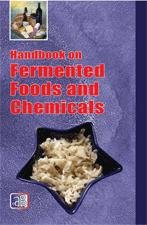Handbook on Fermented Foods and Chemicals
NPCS Board of Consultants & Engineers
2011-10 · ASIA PACIFIC BUSINESS PRESS Inc.
El. knyga
672
Puslapiai
reportĮvertinimai ir apžvalgos nepatvirtinti. Sužinokite daugiau
Apie šią el. knygą
Numerous foods are prepared by fermentation processes in which one or more kinds of microorganisms are responsible for the characteristic flavour or texture, and sometimes for the keeping quality of the product. The manufacture of fermented food products is carried out on a small scale in homes in every country. Fermented products are more palatable and are not as easily spoiled as the natural products. The microorganisms that produce the desirable changes may be the natural flora on the material to be fermented, or may be added as starter cultures. The yield of organic acids principally lactic, serve as a preserving agents. Lactic acid fermentation is an anaerobic intramolecular oxidation reduction process. Both homofermentative and heterofermentative lactic acid bacteria participate in food fermentations. In some fermented food products, yeasts and moulds also participate along with lactic acid bacteria. Most of the reactions in living organisms are catalyzed by protein molecules called enzymes. Enzymes can rightly be called the catalytic machinery of living systems. The real break through of enzymes occurred with the introduction of microbial proteases into detergents. Most of the enzymes are produced by microorganisms in submerged cultures in large reactors called fermentors. In choosing the production strain several aspects have to be considered. Industrial enzyme market is growing steadily. The reason for this lies in improved production efficiency resulting in cheaper enzymes, in new application fields. Tailoring enzymes for specific applications will be a future trend with continuously improving tools and understanding of structure-function relationships and increased search for enzymes from exotic environments. This field deals with how are the enzymes used and applied in practical processes. A lot of fungal, bacterial and actinomycete strains with potential for producing novel industrial enzymes have been identified. This book contains sterilization, fermentation processes, aeration and agitation, use of yeast, yeast production, fermentation raw materials, production of bacterial enzymes, bread making methods, effluent treatment, production of actinomycete protease, lactic acid, citric acid. This handbook will be very helpful to its readers who are just beginners in this field and will also find useful for upcoming entrepreneurs, existing industries, food technologist, technical institution etc.
Įvertinti šią el. knygą
Pasidalykite savo nuomone.
Skaitymo informacija
Išmanieji telefonai ir planšetiniai kompiuteriai
Įdiekite „Google Play“ knygų programą, skirtą „Android“ ir „iPad“ / „iPhone“. Ji automatiškai susinchronizuojama su paskyra ir jūs galite skaityti tiek prisijungę, tiek neprisijungę, kad ir kur būtumėte.
Nešiojamieji ir staliniai kompiuteriai
Galite klausyti garsinių knygų, įsigytų sistemoje „Google Play“ naudojant kompiuterio žiniatinklio naršyklę.
El. knygų skaitytuvai ir kiti įrenginiai
Jei norite skaityti el. skaitytuvuose, pvz., „Kobo eReader“, turite atsisiųsti failą ir perkelti jį į įrenginį. Kad perkeltumėte failus į palaikomus el. skaitytuvus, vadovaukitės išsamiomis pagalbos centro instrukcijomis.







